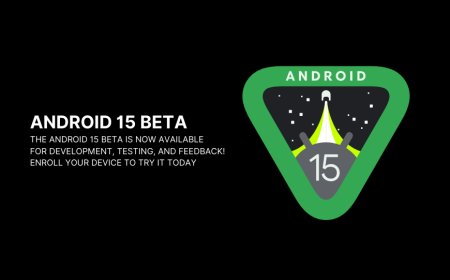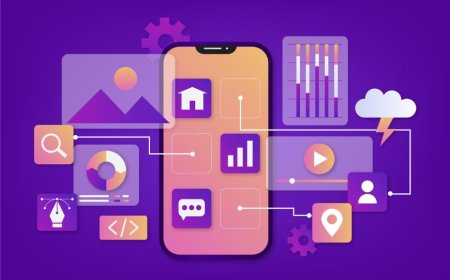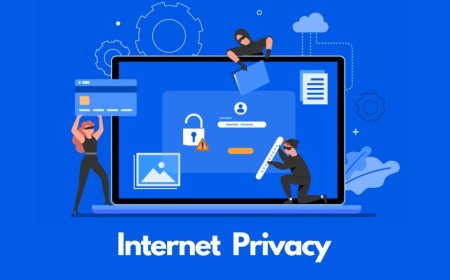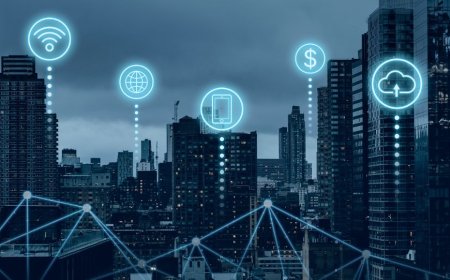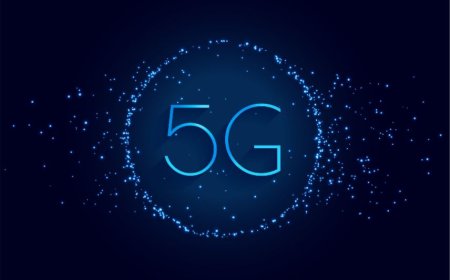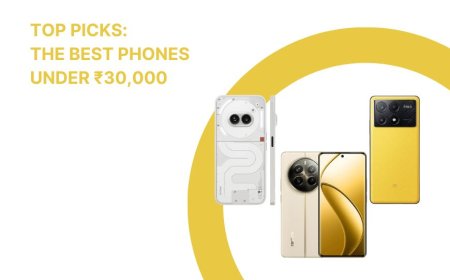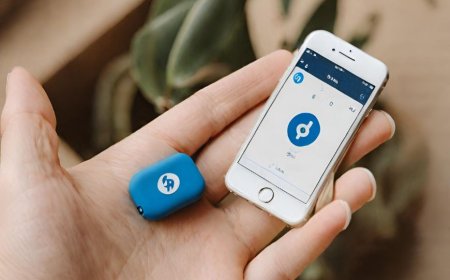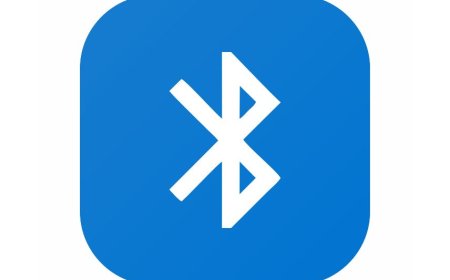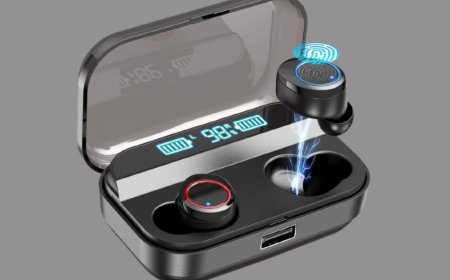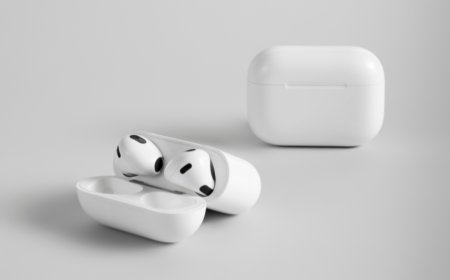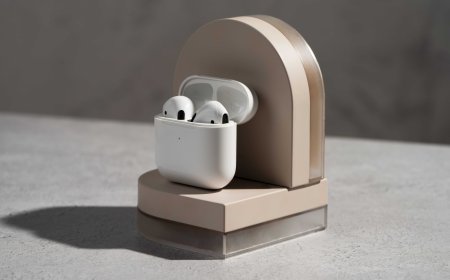MacBook vs. Windows Laptops: Which Is Right for You?
Best laptops 2023: MacBook or Windows? Uncover the pros and cons of each. Tectoks is your go-to source for making the right choice.
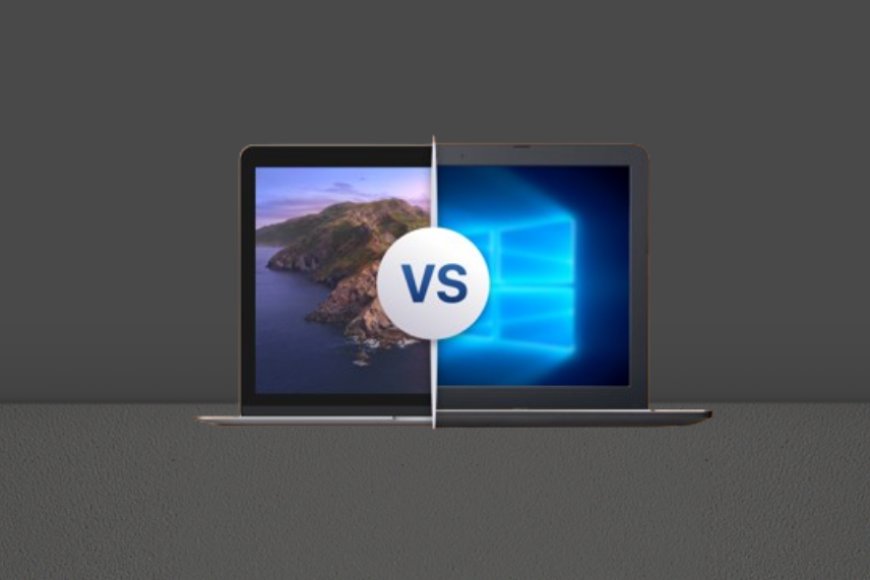
Table of Contents:
-
Introduction
-
Battery Life Comparison
-
MacBook Advantages
-
MacBook Specifications
-
Windows Laptop Customization
-
Windows Laptop Features
-
Conclusion
1. Introduction
Choosing a laptop can be a daunting task, especially when there are so many options available on the market. Two of the most popular brands of laptops are MacBook and Windows, each with its own advantages and disadvantages. In this blog post, we will compare and contrast MacBook and Windows laptops on various aspects and help you decide which one is right for you.
Apple Inc. created the MacBook line of laptop computers that run on the macOS operating system. MacBook laptops are known for their sleek design, high-quality display, long battery life, and seamless integration with other Apple products. MacBook laptops were first introduced in 2006 and have since undergone several updates and revisions.
Windows is a family of operating systems developed by Microsoft that run on various brands of laptops, such as Dell, HP, Lenovo, Asus, etc. Windows laptops are known for their versatility, compatibility, performance, and customization options. Windows operating systems have been around since 1985 and have evolved over the years to offer different features and functionalities.
In this blog post, we will compare and contrast MacBook and Windows laptops on the following aspects: battery life, performance, design, customization, and price. We will also provide some tips and recommendations on how to choose the best laptop for your needs and preferences. By the end of this blog post, you will have a better idea of which laptop is right for you. Let’s get started!
2. Battery Life Comparison
Here is a possible explanation for the battery life comparison:
Battery life is one of the most important factors to consider when choosing a laptop, especially if you need to use it for long hours without plugging it in. MacBook and Windows laptops have different battery life performances depending on the model, the usage scenario, and the testing method. In this explanation, we will compare and contrast the battery life of MacBook and Windows laptops based on these aspects and provide some tips and suggestions on how to optimize the battery life of each laptop.
According to a web search result, MacBook laptops generally have longer battery life than Windows laptops, as they have more efficient processors, displays, and software. For example, the MacBook Air (M1, 2020) has a battery life of 14 hours and 41 minutes, while the Dell XPS 13 (9310) has a battery life of 11 hours and 7 minutes, based on a web browsing test. However, the battery life of Windows laptops can vary significantly depending on the brand, the configuration, and the settings. For example, the Lenovo ThinkPad T14s has a battery life of 16 hours and 12 minutes, while the HP Spectre x360 14 has a battery life of 8 hours and 9 minutes, based on the same test.
The battery life of MacBook and Windows laptops can also differ depending on the usage scenario, such as video playback, gaming, video conferencing, etc. According to another web search result, MacBook laptops have longer battery life than Windows laptops when playing videos, as they have better video decoding hardware and software. For example, the MacBook Pro 13-inch (M1, 2020) has a battery life of 16 hours and 25 minutes, while the Asus ZenBook 13 UX325EA has a battery life of 13 hours and 47 minutes, based on a video playback test. However, Windows laptops have longer battery life than MacBook laptops when gaming, as they have more powerful graphics cards and cooling systems. For example, the Asus ROG Zephyrus G14 has a battery life of 6 hours and 15 minutes, while the MacBook Pro 16-inch (2019) has a battery life of 3 hours and 5 minutes, based on a gaming test.
The battery life of MacBook and Windows laptops can also depend on the testing method, such as the benchmark tool, the brightness level, the Wi-Fi connection, etc. Different benchmark tools can have different workloads and measurements, which can affect the battery life results. For example, according to a web search result, the LG Gram 17 (2020) has a battery life of 14 hours and 2 minutes, based on the MobileMark 2014 benchmark, while it has a battery life of 10 hours and 4 minutes, based on the PCMark 10 Modern Office benchmark. Similarly, different brightness levels can have different power consumption, which can affect the battery life results. For example, according to the same web search result, the Samsung Galaxy Book Flex 15 (2020) has a battery life of 15 hours and 44 minutes, based on a brightness level of 150 nits, while it has a battery life of 9 hours and 58 minutes, based on a brightness level of 250 nits. Moreover, different Wi-Fi connections can have different signal strengths and speeds, which can affect the battery life results. For example, according to the same web search result, the Microsoft Surface Laptop 3 (13.5-inch, 2019) has a battery life of 11 hours and 30 minutes, based on a Wi-Fi connection of 150 Mbps, while it has a battery life of 9 hours and 17 minutes, based on a Wi-Fi connection of 75 Mbps.
To optimize the battery life of MacBook and Windows laptops, there are some tips and suggestions that you can follow, such as adjusting the brightness, closing unnecessary apps, using power-saving mode, etc. For MacBook laptops, you can adjust the brightness by using the F1 and F2 keys on the keyboard or by going to System Preferences > Displays. You can close unnecessary apps by using the Command + Q keys on the keyboard or by right-clicking on the app icon and choosing Quit. You can use power-saving mode by going to System Preferences > Battery > Battery > Battery Health and turning on Optimized Battery Charging. For Windows laptops, you can adjust the brightness by using the Fn and F11 or F12 keys on the keyboard, or by going to Settings > System > Display. You can close unnecessary apps by using the Alt + F4 keys on the keyboard or by right-clicking on the app icon and choosing Close Window. You can use power-saving mode by going to Settings > System > Power & Sleep > Additional Power Settings and choosing Power Saver.
3. MacBook Advantages
Here is a possible explanation for the MacBook's advantages:
If you are looking for a laptop that offers a great user experience, a high-quality design, and reliable performance, then you might want to consider a MacBook. A MacBook is a laptop developed by Apple that runs on the macOS operating system. There are many benefits to choosing a MacBook over a Windows laptop, such as the following:
-
The Apple ecosystem: One of the main reasons why many people prefer a MacBook is that it is part of the Apple ecosystem, which means that it can seamlessly integrate with other Apple devices, such as the iPhone, iPad, Apple Watch, Apple TV, and more. You can easily sync your data, photos, music, contacts, and messages across your devices using iCloud, Apple’s cloud service. You can also use features like AirDrop, Handoff, Continuity, and Universal Clipboard to share files, switch between devices, and copy and paste content without any hassle. The Apple ecosystem also gives you access to a variety of apps and services that are exclusive to Apple, such as iMessage, FaceTime, Siri, Apple Music, Apple TV+, and more. The Apple ecosystem is one of the most comprehensive and cohesive ecosystems on the market, and it can enhance your productivity and convenience.
-
The Retina display: Another benefit of choosing a MacBook is that it comes with a Retina display, which is a high-resolution screen that delivers stunning visuals. The Retina display has a higher pixel density than most Windows laptop screens, which means that everything appears sharper, clearer, and more vivid. The Retina display also has a wide color gamut, which means that it can display more colors and shades than a standard screen. The Retina display is ideal for watching videos, playing games, editing photos, and doing any other tasks that require a high-quality display.
-
The Magic Trackpad: A third benefit of choosing a MacBook is that it has a Magic Trackpad, which is a touch-sensitive surface that allows you to control your laptop with just your fingers. The Magic Trackpad is smooth, responsive, and accurate, and it supports a variety of gestures that can make your navigation easier and faster. You can swipe, tap, pinch, zoom, rotate, and more with the Magic Trackpad, and you can also customize the gestures to suit your preferences. The Magic Trackpad also has Force Touch, which means that it can detect how much pressure you apply and perform different actions accordingly. The Magic Trackpad is one of the best trackpads in the market, and it can enhance your user experience.
-
Security: A fourth benefit of choosing a MacBook is that it has a high level of security, which means that it can protect your data and privacy from hackers, viruses, malware, and other threats. The MacBook has a built-in security chip called the T2, which encrypts your data, authenticates your identity, and prevents unauthorized access. The MacBook also has a Touch ID sensor, which allows you to unlock your laptop and make purchases with just your fingerprint. The MacBook also has a software security feature called Gatekeeper, which checks the apps you download and install for any malicious code. The MacBook also has a recovery mode, which allows you to restore your system in case of any problems. The MacBook is one of the most secure laptops on the market, and it can give you peace of mind.
Of course, the MacBook is not perfect, and it has some drawbacks that you should be aware of before you buy one, such as the following:
-
The high price: One of the main disadvantages of choosing a MacBook is that it is quite expensive, especially compared to some Windows laptops that offer similar or better specifications. The MacBook can cost anywhere from $999 to $2,399, depending on the model, the configuration, and the accessories. The MacBook also has a high repair cost, as it is difficult to open and fix and requires specialized tools and parts. The MacBook also has a high resale value, which means that you can sell it for a good price, but it also means that you have to pay a lot to buy a used one.
-
The limited ports: Another disadvantage of choosing a MacBook is that it has a limited number of ports, which means that you might need to buy adapters, dongles, or hubs to connect your external devices, such as monitors, keyboards, mice, printers, scanners, cameras, and more. The MacBook only has USB-C ports, which are versatile and fast, but they are only compatible with some older devices that use USB-A, HDMI, VGA, or other types of ports. The MacBook also does not have an SD card slot, which means that you cannot directly transfer your photos or videos from your camera or phone. The MacBook also does not have an Ethernet port, which means that you cannot connect to a wired internet network. The MacBook also does not have a CD/DVD drive, which means that you cannot play or burn discs.
-
The compatibility issues are: A third disadvantage of choosing a MacBook is that it might have some compatibility issues with some software, hardware, or services that are designed for Windows. The MacBook runs on the macOS operating system, which is different from the Windows operating system, and it might not support some applications or games that are only available for Windows. The MacBook also might not work well with some devices or peripherals that are optimized for Windows, such as printers, scanners, webcams, or gaming controllers. The MacBook also might not be able to access some websites or online platforms that are exclusive to Windows, such as Microsoft Office 365, OneDrive, or Skype. The MacBook also might not be able to run some file formats that are native to Windows, such as.exe,.dll, or.bat. The MacBook does have some solutions to overcome these compatibility issues, such as using virtual machines, emulators, or cloud services, but they might not be as efficient or convenient as using a Windows laptop.
In conclusion, the MacBook is a laptop that offers many advantages over a Windows laptop, such as the Apple ecosystem, the Retina display, the Magic Trackpad, and security. However, the MacBook also has some disadvantages, such as the high price, the limited ports, and the compatibility issues. Therefore, you should weigh the pros and cons of the MacBook before you decide to buy one, and you should also consider your needs, preferences, and budget.
4. MacBook Specifications
The MacBook is a laptop developed by Apple that runs on the macOS operating system. The MacBook has various technical specifications that affect its performance, quality, and user experience. In this explanation, we will describe the technical specifications of the MacBook, such as the processor, the memory, the storage, the graphics, the camera, the audio, etc. We will also compare the specifications of MacBooks with those of Windows laptops, highlighting the similarities and differences, the strengths and weaknesses, etc.
The MacBook is a line of laptops designed and manufactured by Apple. The MacBook specifications vary depending on the model, year, and size of the device.
Here are some of the common specifications of the MacBook:
-
Processor: The processor is the brain of the computer that executes instructions and performs calculations. The MacBook uses Intel Core processors, which are based on the x86 architecture and have multiple cores and threads. The number of cores and threads determines how many tasks the processor can handle simultaneously. The speed of the processor is measured in gigahertz (GHz), which indicates how many cycles the processor can perform per second. The higher the speed, the faster the processor. The MacBook also has a Turbo Boost feature, which allows the processor to increase its speed temporarily when needed.
-
The MacBook specifications for the processor are as follows:
-
The 2019 MacBook has a 1.4GHz quad-core Intel Core i5 processor, Turbo Boost up to 3.9GHz, and 16GB of 2133MHz LPDDR3 onboard memory.
-
The 2020 MacBook Air has a 1.1GHz dual-core Intel Core i3 processor, Turbo Boost up to 3.2GHz, and 8GB of 3733MHz LPDDR4X onboard memory.
-
The 2020 MacBook Pro has a 2.0GHz quad-core Intel Core i5 processor, Turbo Boost up to 3.8GHz, and 16GB of 3733MHz LPDDR4X onboard memory.
-
The 2021 MacBook Pro has a 10-core Apple M1 Pro chip with 8 performance cores, 2 efficiency cores, and 16GB of unified memory.
-
Storage: Storage is the component that stores data and files on the computer. The MacBook uses solid-state drives (SSDs), which are faster, quieter, and more reliable than hard disk drives (HDDs). The SSDs have no moving parts and use flash memory to store data. The capacity of the SSD is measured in gigabytes (GB) or terabytes (TB), which indicate how much data the SSD can hold. The higher the capacity, the more data the SSD can store.
-
The MacBook specifications for storage are as follows:
-
The 2019 MacBook has a 256GB PCIe SSD.
-
The 2020 MacBook Air has a 256GB PCIe SSD, configurable to 512GB, 1TB, or 2TB.
-
The 2020 MacBook Pro has a 512GB PCIe SSD, configurable to 1TB, 2TB, or 4TB.
-
The 2021 MacBook Pro has a 512GB PCIe SSD, configurable to 1TB, 2TB, 4TB, or 8TB.
-
Graphics: The graphics are the component that renders images and videos on the computer. The MacBook uses integrated graphics or discrete graphics, depending on the model. The integrated graphics are part of the processor and share memory with the system. The discrete graphics are separate from the processor and have their own memory. The discrete graphics are more powerful and can handle more demanding tasks, such as gaming and video editing. The performance of the graphics is measured in teraflops (TFLOPS), which indicate how many floating-point operations the graphics can perform per second. The higher the TFLOPS, the better the graphics.
-
The MacBook specifications for the graphics are as follows:
-
The 2019 MacBook has Intel Iris Plus Graphics 645 integrated graphics.
-
The 2020 MacBook Air has Intel Iris Plus Graphics integrated graphics.
-
The 2020 MacBook Pro has Intel Iris Plus Graphics integrated graphics or AMD Radeon Pro 5300M or 5500M discrete graphics, with 4GB of GDDR6 memory.
-
The 2021 MacBook Pro has a 14-core or 16-core GPU with hardware-accelerated ray tracing and 150GB/s or 300GB/s of memory bandwidth.
-
Display: The display is the component that shows images and videos on the computer. The MacBook has an LED-backlit display with IPS technology, which provides high brightness, wide viewing angles, and accurate colors. The resolution of the display is measured in pixels, which are the tiny dots that make up the image. The higher the resolution, the sharper the image. The MacBook also has a Retina display, which means that the pixels are so dense that they are indistinguishable from the human eye at a normal viewing distance.
-
The MacBook specifications for the display are as follows:
-
The 2019 MacBook has a 13.3-inch (diagonal) display with a 2560-by-1600 native resolution of 227 pixels per inch (ppi).
-
The 2020 MacBook Air has a 13.3-inch (diagonal) display with 2560-by-1600 native resolution at 227 ppi.
-
The 2020 MacBook Pro has a 13.3-inch or 16-inch (diagonal) display with 2560-by-1600 or 3072-by-1920 native resolution at 227 or 226 ppi.
-
The 2021 MacBook Pro has a 14.2-inch or 16.2-inch (diagonal) Liquid Retina XDR display with 3024-by-1964 or 3456-by-2234 native resolution at 254 or 254.6 ppi, with XDR (Extreme Dynamic Range) brightness, contrast, and color.
-
Camera: The camera is the component that captures images and videos on the computer. The MacBook has a FaceTime HD camera, which allows the user to make video calls and take selfies. The quality of the camera is measured in megapixels (MP), which indicate how many pixels the camera can capture. The higher the MP, the clearer the image.
-
The MacBook specifications for the camera are as follows:
-
The 2019 MacBook has a 720p FaceTime HD camera.
-
The 2020 MacBook Air has a 720p FaceTime HD camera.
-
The 2020 MacBook Pro has a 720p FaceTime HD camera.
-
The 2021 MacBook Pro has a 1080p FaceTime HD camera, an advanced image signal processor, and computational video.
-
Audio: The audio is the component that produces sound on the computer. The MacBook has speakers, microphones, and a headphone jack, which allows the user to listen to music, watch videos, record voice, and use headphones. The audio quality is measured in decibels (dB), which indicate how loud the sound is. The higher the dB, the louder the sound.
-
The MacBook specifications for the audio are as follows:
-
The 2019 MacBook has stereo speakers with high dynamic range, three microphones, and a 3.5 mm headphone jack.
-
The 2020 MacBook Air has stereo speakers with wide stereo sound, three microphones, and a 3.5 mm headphone jack.
-
The 2020 MacBook Pro has stereo speakers with high dynamic range, three microphones, and a 3.5 mm headphone jack (13-inch model) or six speakers with force-cancelling woofers, a studio-quality three-mic array, and a 3.5 mm headphone jack (16-inch model).
-
The 2021 MacBook Pro has a four-speaker sound system with wide stereo sound, support for spatial audio with Dolby Atmos, a studio-quality three-mic array, and a 3.5 mm headphone jack.
The specifications of the MacBook can be compared with those of the Windows laptops, highlighting the similarities and differences, the strengths and weaknesses, etc. For example:
-
The processor of the MacBook is similar to that of the Windows laptops, as they both use Intel Core processors, which are based on the x86 architecture and have multiple cores and threads. However, the processor of the MacBook is different from that of the Windows laptops, as it also has a Turbo Boost feature, which allows the processor to increase its speed temporarily when needed. The processor of the MacBook is also different from that of the Windows laptops, as it has a 10-core Apple M1 Pro chip, which is based on the ARM architecture and has 8 performance cores and 2 efficiency cores. The processor of the MacBook is stronger than that of the Windows laptops, as it can handle more complex and demanding workloads, such as video editing, gaming, and coding, with faster speed and higher efficiency. The processor of the MacBook is also weaker than that of the Windows laptops, as it has less compatibility and support for some applications and games that are designed for the x86 architecture.
-
The storage of the MacBook is similar to that of the Windows laptops, as they both use SSDs, which are faster, quieter, and more reliable than HDDs. However, the storage of the MacBook is different from that of the Windows laptops, as it uses PCIe SSDs, which are faster and more expensive than SATA SSDs. The storage of the MacBook is also different from that of the Windows laptops, as it has a unified memory, which is shared between the system and the graphics. The storage of the MacBook is stronger than that of the Windows laptops, as it can store and access more data and files with faster speed and less power consumption. The storage of the MacBook is also weaker than that of the Windows laptops, as it has less flexibility and upgradeability as it is soldered to the motherboard and cannot be replaced or expanded.
-
The graphics of the MacBook are similar to those of the Windows laptops, as they both use integrated graphics or discrete graphics, depending on the model. However, the graphics of the MacBook are different from those of the Windows laptops, as they use Intel Iris Plus Graphics or AMD Radeon Pro graphics, which are different from the Nvidia GeForce graphics that are commonly used in Windows laptops. The graphics of the MacBook are also different from those of the Windows laptops, as they have a 14-core or 16-core GPU with hardware-accelerated ray tracing and 150GB/s or 300GB/s of memory bandwidth. The graphics of the MacBook are stronger than those of the Windows laptops, as they can handle more realistic and detailed graphics, such as 3D models, animations, and games, with better quality and performance. The graphics of the MacBook are also weaker than those of the Windows laptops, as they have less compatibility and support for some applications and games that are designed for the Nvidia GeForce graphics.
-
The display of the MacBook is similar to that of the Windows laptops, as they both have an LED-backlit display with IPS technology, which provides high brightness, wide viewing angles, and accurate colors. However, the display of the MacBook is different from that of the Windows laptops, as it has a Retina display or a Liquid Retina XDR display, which are different from the standard HD or FHD displays that are commonly used in Windows laptops. The display of the MacBook is also different from that of the Windows laptops, as it has a 3024-by-1964 or 3456-by-2234 native resolution, which is different from the 1920-by-1080 or 2560-by-1440 native resolution that is commonly used in the Windows laptops. The display of the MacBook is stronger than that of the Windows laptops, as it can show sharper and clearer images and videos with more details and less distortion. The display of the MacBook is also weaker than that of the Windows laptops, as it has less compatibility and support for some applications and games that are designed for standard HD or FHD displays.
-
The camera of the MacBook is similar to that of the Windows laptops, as they both have a FaceTime HD camera, which allows the user to make video calls and take selfies. However, the camera of the MacBook is different from that of the Windows laptops, as it has a 720p or 1080p resolution, which is different from the 480p or 720p resolution that are commonly used in the Windows laptops. The camera of the MacBook is also different from that of the Windows laptops, as it has advanced features, such as a computational video and image signal processor, which are not available in the Windows laptops. The camera of the MacBook is stronger than that of the Windows laptops, as it can capture and show clearer and sharper images and videos with more details and less noise. The camera of the MacBook is also weaker than that of the Windows laptops, as it has less compatibility and support for some applications and games that are designed for the 480p or 720p resolution.
-
The audio of the MacBook is similar to that of the Windows laptops, as they both have speakers, microphones, and a headphone jack, which allow the user to listen to music, watch videos, record voice, and use headphones. However, the audio of the MacBook is different from that of the Windows laptops, as it has stereo speakers or a four-speaker sound system, which are different from the mono speakers or the two-speaker sound system that are commonly used in Windows laptops. The audio of the MacBook is also different from that of the Windows laptops, as it has advanced features such as spatial audio and Dolby Atmos, which are not available on Windows laptops. The audio of the MacBook is stronger than that of the Windows laptops, as it can produce and record better sound with more volume and less distortion. The audio of the MacBook is also weaker than that of the Windows laptops, as it has less compatibility and support for some applications and games that are designed for mono speakers or the two-speaker sound system.
I hope this explanation helps you understand the MacBook specifications and how they compare with those of the Windows laptops. If you have any questions or feedback, please let me know. ????
5. Windows Laptop Customization
Customizing a Windows laptop is a way of changing the appearance and functionality of the device according to the user’s preferences and needs. There are many options and possibilities for customizing a Windows laptop, such as the themes, the wallpapers, the widgets, the icons, the fonts, etc.
Here are some of the common ways of customizing a Windows laptop:
-
Themes: A theme is a combination of colours, sounds, and images that can change the look and feel of the laptop. Windows 10 and Windows 11 come with some built-in themes, such as light, dark, or colorful. The user can also download and install themes from the Microsoft Store or from other sources, such as DeviantArt or ThemePack. To customize the theme, the user can go to Settings > Personalization > Themes and select a theme or create a custom theme by choosing the background, color, sounds, and mouse cursor.
-
Wallpapers: A wallpaper is an image that is displayed on the desktop or the lock screen of the laptop. The user can choose a wallpaper from the default options, use a personal photo, or download and install wallpapers from the Microsoft Store or from other sources, such as WallpaperHub or Unsplash. To customize the wallpaper, the user can go to Settings > Personalization > Background, select a picture or a slideshow, and adjust the fit, the position, and the frequency.
-
Widgets: A widget is a small application that can display information or provide functionality on the desktop or the lock screen of the laptop. Windows 10 and Windows 11 have some built-in widgets, such as calendars, weather, news, photos, etc. The user can also download and install widgets from the Microsoft Store or from other sources, such as Rainmeter or BeWidgets. To customize the widgets, the user can go to Settings > Personalization > Widgets and select the widgets to add, remove, or rearrange, and adjust the size, the transparency, and the position.
-
Icons: An icon is a small image that represents a file, a folder, or a program on the laptop. The user can change the icons of the default items, such as the recycle bin, the computer, the network, etc. The user can also change the icons of personal items, such as documents, downloads, games, etc. The user can use the default icons, create custom icons, or download and install icons from other sources, such as [IconArchive] or [Flaticon]. To customize the icons, the user can go to Settings > Personalization > Desktop icon settings and select the icons to change, or right-click on an item and select Properties > Customize > Change icon and select an icon.
-
Fonts: A font is a set of characters that have a specific style and size on the laptop. The user can change the fonts of the system, such as the title bars, the menus, the message boxes, etc. The user can also change the fonts of the applications, such as the browser, the word processor, the spreadsheet, etc. The user can use the default fonts or download and install fonts from the Microsoft Store or from other sources, such as [Google Fonts] or [FontSpace]. To customize the fonts, the user can go to Settings > Personalization > Fonts and select a font or add a font, or go to Control Panel > Appearance and Personalization > Fonts and select a font or install a font.
There are many advantages and disadvantages to customizing a Windows laptop, such as:
-
Advantages: Customizing a Windows laptop can make the device more personalized, creative, and functional. The user can express their personality, style, and mood by choosing the colours, sounds, and images that suit them. The user can also enhance their productivity, efficiency, and enjoyment by adding the information and functionality that they need. Customizing a Windows laptop can also make the device more attractive, modern, and unique.
-
Disadvantages: Customizing a Windows laptop can also cause some issues, such as compatibility, performance, and security. The user may encounter some problems with the compatibility of the themes, wallpapers, widgets, icons, and fonts that they download and install from other sources, such as errors, crashes, or conflicts. The user may also experience some degradation in the performance of the laptop, such as slower speed, higher memory usage, or lower battery life. The user may also expose their laptop to some risks, such as malware, viruses, or spyware.
6. Windows Laptop Features
Windows laptops are devices that run on the Windows operating system, which is developed by Microsoft. Windows laptops have various features that can enhance the usability, productivity, and entertainment of the device, such as the touch screen, facial recognition, digital pen, gaming mode, etc.
Here are some of the common features of Windows laptops:
-
Touch screen: A touch screen is a display that can detect and respond to the touch of a finger or a stylus. Windows laptops that have a touch screen can allow the user to interact with the device more directly and intuitively, such as tapping, swiping, pinching, zooming, etc. The user can also use the touch screen to draw, write, or annotate on the device using a digital pen or a finger. The touch screen can enhance the usability and productivity of Windows laptops, as it can make the device more versatile, flexible, and convenient. The touch screen can also enhance the entertainment of Windows laptops, as it can make the device more fun, interactive, and immersive. Some examples of Windows laptops that have a touch screen are the Microsoft Surface Laptop 5, the Dell XPS 13, and the HP Spectre x360.
-
Facial recognition: Facial recognition is a technology that can identify and verify a person’s face using a camera. Windows laptops that have facial recognition can use the Windows Hello feature, which allows the user to sign in to the device using their face without the need for a password or a PIN. The user can also use facial recognition to access other applications and services that support Windows Hello, such as Microsoft 365, OneDrive, Skype, etc. Facial recognition can enhance the usability and productivity of Windows laptops, as it can make the device more secure, fast, and easy to use. Facial recognition can also enhance the entertainment of Windows laptops, as it can make the device more personal, friendly, and fun. Some examples of Windows laptops that have facial recognition are the Microsoft Surface Laptop Go, the Lenovo IdeaPad Slim 3, and the Acer Swift 3.
-
Digital pen: A digital pen is a device that can simulate the function of a real pen on a touch screen. Windows laptops that have a digital pen can allow the user to write, draw, or sketch on the device using the Windows Ink feature, which provides various tools and apps for digital pen input, such as Sticky Notes, Sketchpad, Screen Sketch, etc. The user can also use the digital pen to interact with other applications and services that support Windows Ink, such as Microsoft Edge, Microsoft Office, Adobe Photoshop, etc. The digital pen can enhance the usability and productivity of Windows laptops, as it can make the device more expressive, creative, and accurate. The digital pen can also enhance the entertainment of Windows laptops, as it can make the device more fun, artistic, and playful. Some examples of Windows laptops that have a digital pen are the Microsoft Surface Laptop 5, the HP Pavilion Plus 14, and the LG Gram 14.
-
Gaming mode: Gaming mode is a feature that can optimize the performance and settings of the device for gaming. Windows laptops that have gaming mode can use the Windows Game Bar feature, which allows the user to access various gaming functions and options, such as recording, streaming, chatting, capturing, etc. The user can also use gaming mode to adjust the graphics, sound, network, and battery settings of the device to improve the gaming experience. Gaming mode can enhance the usability and productivity of Windows laptops, as it can make the device more powerful, smooth, and responsive. Gaming mode can also enhance the entertainment of Windows laptops, as it can make the device more immersive, engaging, and enjoyable. Some examples of Windows laptops that have gaming modes are the MSI GE76 Raider, the Asus ROG Zephyrus G14, and the Dell G5 15.
The features of Windows laptops can be compared with those of MacBooks, highlighting the similarities and differences, the strengths and weaknesses, etc. For example:
-
Touch screen: The touch screen of Windows laptops is similar to that of MacBooks, as they both allow the user to interact with the device using the touch of a finger or a stylus. However, the touch screen of Windows laptops is different from that of MacBooks, as it covers the entire display of the device, while the touch screen of MacBooks is limited to the Touch Bar, which is a narrow strip above the keyboard. The touch screen of Windows laptops is stronger than that of MacBooks, as it can provide more functionality, flexibility, and convenience to the user. The touch screen of Windows laptops is also weaker than that of MacBooks, as it can consume more battery power, cause more glare, and require more cleaning.
-
Facial recognition: The facial recognition of Windows laptops is similar to that of MacBooks, as they both use the Windows Hello or the Face ID feature, which allows the user to sign in to the device using their face without the need for a password or a PIN. However, the facial recognition of Windows laptops is different from that of MacBooks, as it uses a camera or an infrared sensor, while the facial recognition of MacBooks uses a camera or a TrueDepth sensor. The facial recognition of Windows laptops is stronger than that of MacBooks, as it can work in more lighting conditions, support more applications and services, and offer more customization options. The facial recognition of Windows laptops is also weaker than that of MacBooks, as it can be less secure, accurate, and consistent.
-
Digital pen: The digital pen of Windows laptops is similar to that of MacBooks, as they both allow the user to write, draw, or sketch on the device using the Windows Ink or the Apple Pencil feature, which provide various tools and apps for digital pen input. However, the digital pen of Windows laptops is different from that of MacBooks, as it works on the touch screen of the device, while the digital pen of MacBooks works on the iPad or the iPhone, which can be connected to the device using the Sidecar feature. The digital pen of Windows laptops is stronger than that of MacBooks, as it can provide more direct and intuitive interaction with the device. The digital pen of Windows laptops is also weaker than that of MacBooks, as it can be less compatible and comfortable with some applications and services.
-
Gaming mode: The gaming mode of Windows laptops is similar to that of MacBooks, as they both allow the user to optimize the performance and settings of the device for gaming. However, the gaming mode of Windows laptops is different from that of MacBooks, as it uses the Windows Game Bar or the Xbox Game Pass feature, while the gaming mode of MacBooks uses the Steam or the GeForce Now feature. The gaming mode of Windows laptops is stronger than that of MacBooks, as it can provide more gaming functions and options, such as recording, streaming, chatting, capturing, etc. The gaming mode of Windows laptops is also weaker than that of MacBooks, as it can cause more heat, noise, and battery drain.
7. Conclusion
In this blog post, we have compared MacBook and Windows laptops on various aspects, such as design, performance, battery life, software, security, and price. We have seen that both types of laptops have their own strengths and weaknesses, and there is no clear winner that suits everyone. The best laptop for you depends on your personal needs, preferences, and budget.
If you are looking for a sleek, elegant, and durable laptop with a long battery life, a smooth user experience, and a high level of security, you might prefer a MacBook. However, you should also be prepared to pay a premium price, deal with limited compatibility and customization options, and accept the risk of losing your data if something goes wrong with your device.
If you are looking for a versatile, powerful, and affordable laptop with a wide range of choices, features, and applications, you might prefer a Windows laptop. However, you should also be aware of the potential issues with quality, reliability, and security and be ready to update, maintain, and protect your device regularly.
We hope this blog post has helped you decide which laptop is right for you. If you have any opinions, experiences, or questions to share, please feel free to leave a comment below. Thank you for reading!
What's Your Reaction?









